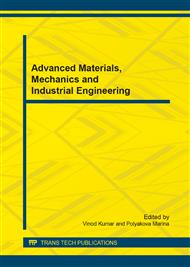p.233
p.239
p.244
p.250
p.257
p.265
p.271
p.276
p.281
Influence of Thermal Decomposition of Ammonia Propellant in Solar Thermal Propulsion
Abstract:
Solar thermal propulsion is a kind of space propulsion technology with great potential applications. Due to the difficulty of hydrogen storage in orbit, ammonia becomes an ideal candidate propellant as its stability and easier storage. In solar thermal propulsion system, the working temperature is usually above 2300K, and in this condition the dissociation of ammonia will occur. Thus, using ammonia as a single component propellant to compute and analysis the performance of thruster is not precise, and the mixture components produced from ammonia dissociation must be taken into account. In this paper a novel heat exchanger configuration with platelet technology is designed, and based on finite-rate chemical reaction method and computational fluid dynamics, the dissociation process of ammonia in the heat exchanger and nozzle is simulated. Then the influence to the specific impulse of the solar thermal propulsion system is comparatively analyzed. The simulation result indicates that the main productions of the dissociation are N2 and H2, and the mole fraction of other components is small value that can be neglected. The specific impulse considering dissociation reaction is higher than not considering, so that this research can estimate the performance of solar thermal propulsion with ammonia propellant more precisely.
Info:
Periodical:
Pages:
257-264
Citation:
Online since:
July 2014
Authors:
Price:
Сopyright:
© 2014 Trans Tech Publications Ltd. All Rights Reserved
Share:
Citation:


